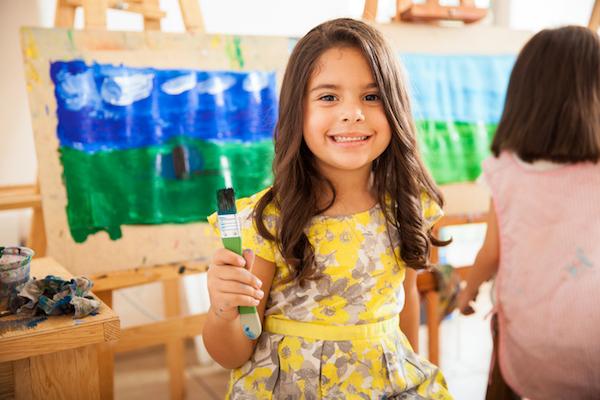NAGC works to support those who enhance the growth and development of gifted and talented children through education, advocacy, community building, and research
 In Growing Up Creative, author Teresa Amabile explains that fostering a creative environment helps children engage in abstract and analytical thinking, sharpen their visual-spatial acuity, and become more receptive to out-of-the-box thinking. Creative thinkers are more able to suspend judgment about people and circumstances and avoid gender stereotyping. They have high degrees of autonomy and demonstrate self-discipline in matters regarding work. They are able to delay gratification, tolerate ambiguity, and demonstrate high levels of self-control.
In Growing Up Creative, author Teresa Amabile explains that fostering a creative environment helps children engage in abstract and analytical thinking, sharpen their visual-spatial acuity, and become more receptive to out-of-the-box thinking. Creative thinkers are more able to suspend judgment about people and circumstances and avoid gender stereotyping. They have high degrees of autonomy and demonstrate self-discipline in matters regarding work. They are able to delay gratification, tolerate ambiguity, and demonstrate high levels of self-control.
Creative learners are big-picture global thinkers with a willingness to take risks and strive for excellence. With your guidance, your gifted child can become a global thinker and make connections to real life experiences through the arts. This can lead to a lifetime of creative thinking, future problem solving.
“I’m painting a tiger pretending to be a lion,” exclaimed five-year-old Ben as he added a mane to his crude picture of a striped cat. Soon after that, he bounded off with a dry paintbrush-turned-sword and announced that he was Captain Hook pretending to be Peter Pan.
Children like Ben—who flow with unusual, humorous ideas—demonstrate creative thinking. Creativity requires original thought, which in turn requires clarity and a deep enough understanding of a concept that a novel idea can percolate and heuristic problem solving emerge. Exposure to and experience with the arts allows children to create, design, generate, and compose new ideas, further developing the creative thinking inherent in young children.
Color as a Catalyst
 If navigated intentionally, learning about color can help children develop vocabulary, complex thinking, and keen observation. Use a variety of tactile experiences to help your preschooler gain an understanding of the nuances of color that will be missed if left to a computer program or flashcards.
If navigated intentionally, learning about color can help children develop vocabulary, complex thinking, and keen observation. Use a variety of tactile experiences to help your preschooler gain an understanding of the nuances of color that will be missed if left to a computer program or flashcards.
Exploring color using accurate vocabulary and connections to real things will help your child internalize a deeper understanding of a concept that many adults understand only at a cursory level. As your child thinks deeply about color and observes it intentionally through a variety of experiences, she gains new perspectives on her rapidly expanding world.
Art Museums Develop Observational Skills
Young children can enjoy art museums! Focus on the whimsical and magical, nature and animals, and other topics of interest to your child. Don’t try to do the whole museum in one visit. Many museums have free admission one day per week, and family memberships are often more affordable than a day rate.
Exploring Art Around You
Before children learn to read and write, exposure to the arts enables them to express representative and abstract thinking. They learn to see things through a lens that is uniquely theirs. They learn that there is no right or wrong way to create. By examining and making a variety of artwork, including abstract art, children learn that people are individuals with unique expressions of ideas and emotions.
To nurture these qualities in their children, parents can:
A Lifetime of Creative Problem Solving
Creative expression in the arts is as natural and developmentally necessary for children as fresh air and sunshine. Through the arts, children learn the fundamental process of discovering and imagining, originating and problem solving, thinking and creating. And as a parent, you are your child’s most important teacher. The conversations you have will help your child develop thinking skills that will last his lifetime.
Karen Morse holds a Master of Arts in Special Education with an emphasis on the gifted learner. With years of experience as a teacher, administrator, and mother of gifted children, she is currently an education consultant for Alternative Education Solutions, specializing in curriculum/program development, professional development, homeschooling/school placement, student advocacy, and gifted programming.
The views expressed in The High Flyer are not necessarily those of NAGC.